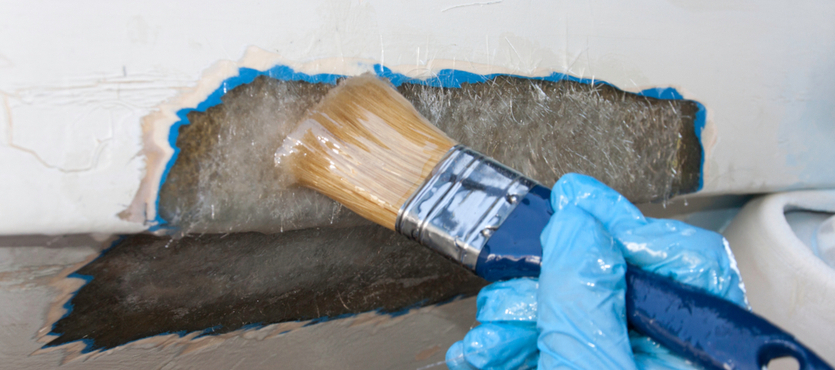Cracks in fiberglass pools range in size and severity – some cracks, like spider cracks, aren’t usually anything to worry about. On the other hand, structural cracks can cause bigger problems if they are not addressed in a timely fashion.
If you notice a crack in your fiberglass pool, you’ll want to inspect and repair it as soon as possible. The first step is to drain your pool of water so that you have complete access to the crack and surrounding surface area. Depending on the size and depth of the crack, there are different ways to address the issue.
For minor cracks, simply cover it with fiberglass paint. For more severe cracks, generally cracks that measure between ½-inch deep and extend 1-inch in length on both sides, the crack and surrounding area may need to be sanded down, with any loose particles removed. The entire defective section may need to be removed and replaced. This task is best left to the professionals who will ensure that the crack is properly fixed, and the longevity of your pool is in the clear.
Spider Cracks in Gelcoat of Fiberglass Pools
Spider cracks that form in the gelcoat are one of the most pressing problems associated with fiberglass pools. These types of cracks are difficult to see, especially when the pool is filled with water. Not only are they hard to see, but in addition, they don’t typically cause any problems, so they aren’t usually something to worry about. All in all, spider cracks are just a normal part of wear and tear on fiberglass pools.
These hairline cracks form in the surface layer, or gelcoat, and are not structural – which means they will not impact the overall structure of your pool. The crack usually does not extend into the structural laminate layers of your pool, and that’s a good thing. In addition, they typically only impact one area of the pool instead of spreading to the entire pool.
There are many different things that can cause these cracks to form, including improper installation or manufacturing too thin of slabs that cannot withstand the strain of shipping and lifting. If the fiberglass arrives on-site cracked, it should be sent back and not installed. If the gelcoat is too thick, it is less flexible and more likely to crack. In addition, outside factors like a tree branch or other intrusion can put pressure on the pool and cause spider cracks to form post-construction.
Ideally, the right manufacturer will create a level pool with the ideal thickness applied to the gel coat to help prevent spider cracks from forming in the first place. In addition, a skilled contractor can properly level the pool and install the fiberglass with care and attention to detail.
Matching Repairs to Colored Fiberglass Pools
These days, most pools are made from colored fiberglass. While this looks nice, it can create additional concerns when repairing cracks because it may be difficult to match the exact color of your pool. Luckily, most fiberglass pools do not require repairs for the first 20 to 40 years of their life.
If repairs are necessary, it’s important to work with a skilled repair technician and rely on a solid surface finish. Still, it may be difficult to replicate the exact look as repairs tend to resemble a factory finish. To get as close as possible, research the different fiberglass pool manufacturers to see if their colored finish is a solid surface or a multi-layered finish.
Need Repairs to Your Fiberglass Pool?
Look no further than the professionals at Pools by Signature. We specialize in fiberglass pools and will stop at nothing to ensure a job well done. Contact us today to learn more or to get a quote.

